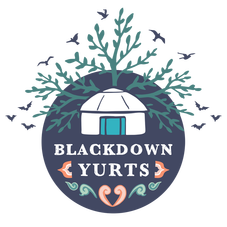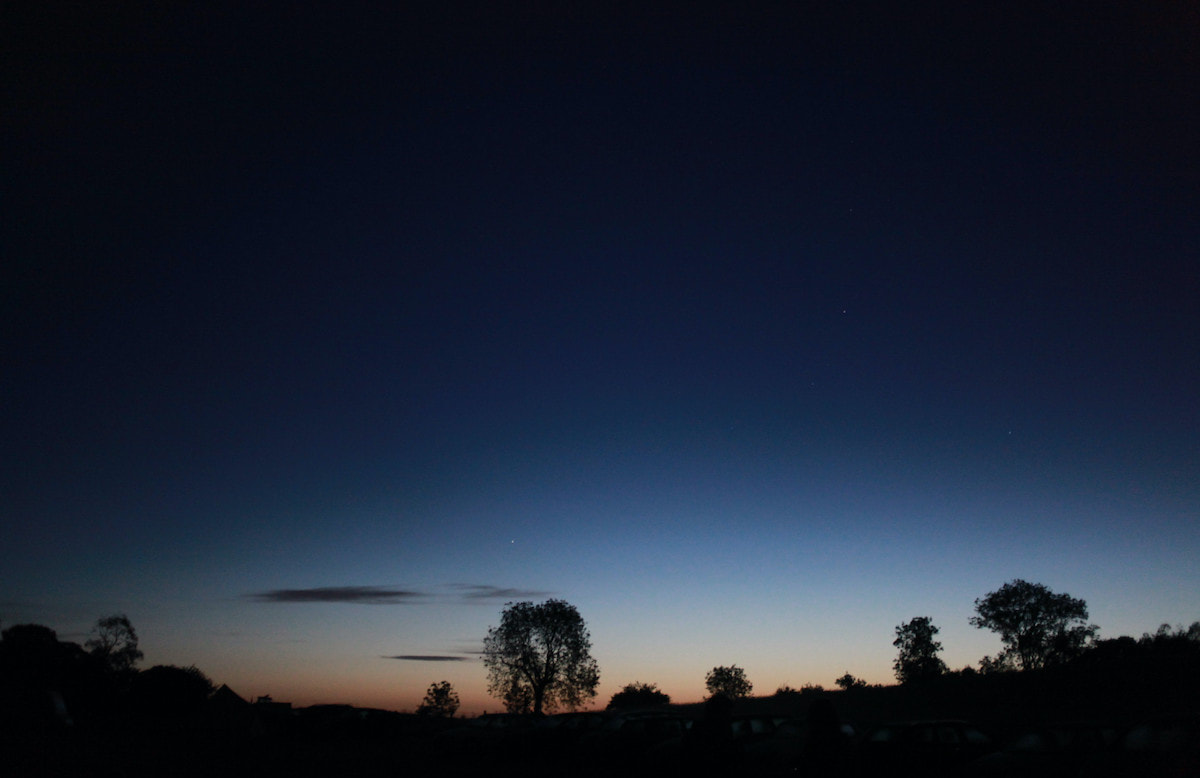|
This is still one of my all-time favourite photos that Mark has taken here at Blackdown Yurts. The majesty of the Milky Way coursing down the centre, Mars at far left and a shooting star at centre right, with a group of happy glampers enjoying the campfire next to their yurt. 'Happy days', or rather 'happy nights'. At the end of last year I attended a meeting where representatives of the Exmoor Dark Skies Project and the UK Dark Skies Partnership spoke about the importance of keeping our landscapes as free as possible of light pollution. It's so important to avoid excessive lighting as it can harm wildlife and prevent us from seeing the stars, never mind the waste of money and energy and the harmful contribution that makes to climate change. We are lucky that our yurts nestle in a dark valley on the edge of the Blackdown Hills AONB with very little light spill. We have been careful not to introduce a lot of lighting on site, instead relying on guests to use torches and lanterns to find their way around. We have a lot of nocturnal wildlife, which you could spot (or hear) on your holiday including numerous species of bats, barn and tawny owls, and foxes. Read on to find out five ways you can embrace your dark side this year... Five ways to try star (and moon) gazing this year1. Use binoculars to boost your visionI learnt recently that you can actually see the moons of Jupiter and rings of Saturn through binoculars so you don't really need much specialist equipment. The moon also looks amazing through bins. We have a few pairs available to borrow in the barn. I'm planning to dust off my mum's telescope this year and actually work out how to use it. 2. Use an app to help you name the stars and planetsI use an app called SkyView Lite (just the free version) to tell me what the stars, constellations and planets are that I'm looking at. It also tells you the location of the International Space Station and Hubble Space Telescope. Just point your smartphone at the sky and see what you can find. 3. Delve into a stargazer's almanacI've bought a copy of the 2023 stargazer's almanac to keep at the yurt barn this season. It tells you month by month what should be visible when you look to the North and to the South with loads of interesting astronomical facts too. 4. Take part in the CPRE's Star Count this FebruaryI've done this citizen science survey a couple of year's running and the aim is to be able to tell if light pollution is getting worse by monitoring the same piece of night sky over time. You can take part from wherever you are, as long as you can find the constellation of Orion (take a peek on the app if you aren't sure). You simply count how many stars you can see within an area of the constellation over a set period of time on a night between 17th and 24th February. Full instructions on how to take part and report your results can be found at the CPRE's Star Count website. 5. Follow the moonThe yurts have a fantastic view of the moon rising over Blackborough Wood. While the night sky is beautiful any time of the year, full moon is often especially memorable. However, if you want to have really dark skies to try to see the most stars you should visit at or around New Moon when the skies are darkest. During our open season this year there will be full moons on: 6 April, 5 May, 4 June, 3, July, 1 August, 31 August (blue moon, second full moon in a month), 29 September. The moon appears nearly full a few days either side. And new moons will occur on: 20 April, 19 May, 18 June, 17 July, 16 August, 15 September. Go batty at Blackdown YurtsRemember we also have bat detectors to borrow and sometimes we run bat walks too so please ask Katie for more information before or during your stay.
0 Comments
Leave a Reply. |
AuthorKatie is one of the owners of Blackdown Yurts and likes to write about things going on at and around her beautiful glamping site Archives
July 2024
Seasonal Recipes |
In Devon's Hidden Valley, discover the abundance of nature and wildlife
in beautiful surroundings with a unique glamping adventure.
in beautiful surroundings with a unique glamping adventure.
Copyright The Creative Business Network © 2018





 RSS Feed
RSS Feed







